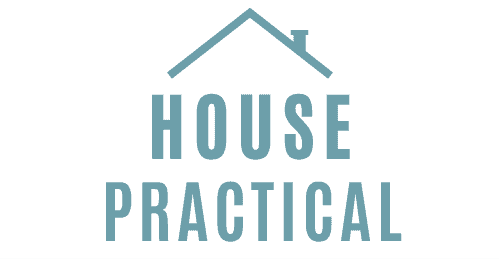Grout in tiles or pavers is rarely flawless, be it cementitious, epoxy, or a modified variant. The surface may have uneven edges or be covered in dirt and grime. In these cases, you may decide to sand and smooth grout. (source: The Balance Small Business)
Here are the steps to sand and smooth grout:
- Decide if you can sand and smooth the grout you have.
- Choose an appropriate sanding method for the grout.
- Get the essential sanding tools for the project.
- Sand and smooth grout following the best practices.
Although a practical option in many cases, sanding isn’t the only way to smooth grout. You may refresh your tile grouts or remove the topcoat between pavers and recoat for a desirable finish. This guide explains if, when, and how to sand and smooth grout.
1. Decide If You Can Sand and Smooth the Grout You Have
There are more than a dozen types of tiles and a score of pavers in American homes. These materials have varying widths and compositions of grouts. Therefore, it’s unwise to generalize whether you can sand and smooth your grout. (source: Home Stratosphere – Paver Types)
The tiles on the shower walls, bathroom dados, and backsplashes in kitchens don’t always have a sufficiently wide grout between the tiles for you to use regular sandpapers, even if you fold them in half to form a slender edge. Besides, there’s a risk of damaging a few types of tiles, especially if they’re glazed. (source: Home Stratosphere – Types of Tiles for Flooring)

Can You Sand Grout?
You can sand grout but you need the right tools to get a smooth finish without inadvertently damaging the tiles. You also need to reseal the grout after sanding if it has cement. Even modified epoxy uses cement, which requires resealing.
Generally, tiles with a gap of 1/16th of an inch (0.16 cm) have unsanded cementitious grouts. Wider grouts, such as those 1/8th of an inch (0.32 cm), are sanded cementitious, as these aren’t as vulnerable to cracking.
If you have unsanded cement with a smooth finish that is 1/8th of an inch or wider, you need to use the sandpaper with caution; otherwise, you may crack or damage the grout.
The surface irregularities aside, you may have to sand grout to eliminate dirt and grime buildup of years, not all of which can be cleaned with regular cleaning. While the grout in your pavers will have significant debris buildup, both natural and artificial, the shower and kitchen tiles on the walls and floors can also have rigid stains and protruded unevenness due to sustained use.
2. Choose an Appropriate Sanding Method for the Grout
You have the option to dry or wet sand grout, depending on your situation and your preference.
You can also sand first and then use a grout cleaner for an excellent finish. Whatever option you choose, don’t be too abrasive.
Can I Use Sandpaper on Grout?
You can use sandpaper on grout, manually on wall and floor tiles, or using an orbital sander between the pavers, depending on your material. Another option is a sanding sponge for the grouts on your shower and kitchen tiles.
Choose fine-grit sandpaper for reasonably stained and uneven grouts. In most cases, a 220 grit should suffice. Rigid stains and substantial roughness may call for medium-grit sandpaper, such as 120.
Sometimes, it’s best to start with medium-grit sandpaper and switch to a finer one, depending on the condition of the grouts.
Coarser sandpapers aren’t suitable because they may cause more damage than good. Besides, they’re unlikely to form the slim edges you need.

3. Get the Essential Sanding Tools for the Project
Sanding and smoothing grout isn’t the most exciting job in the world. Some people prefer using brushes, whereas many resort to cleaning agents.
Unfortunately, these methods don’t always work on tough stains and rough surfaces. Here are a few more suitable tools for more stubborn stains.
Sanding Sponge
A sanding sponge is exceptionally easier to use on grout than regular sandpaper, for several reasons:
- You don’t need to fold a sanding sponge to get an appropriate edge.
- You can comfortably grip a sanding sponge and work much faster with more impact than typical sandpapers.
- They come in single or dual-angle varieties.
For example, the Norton WallSand Sanding Sponge (available on Amazon.com) is a practical option. This 90-degree dual-sided sponge has an ergo grip that makes sanding and smoothing grouts a much easier mission.
Alternatively, you can get the 3M Drywall Sanding Sponge, which is a single-angle variant available in different grits. A single-angle sanding sponge may be handy when cleaning grouts at the corners with tiles on the adjacent side.
Painter’s Tape
Painter’s tape protects the tiles from accidental damage when you sand and smooth grout. You shouldn’t use masking tapes because they have a tendency to bleed and leave behind a sticky residue, as they have more adhesive.
Plus, you can remove painter’s tape effortlessly without any adverse effect on your tiles or pavers. (source: Tape Jungle)
Grout Sealer
Last but not least, you need a grout sealer. You may choose a plain or clear grout sealer if that’s what you had already. Or you can get a colored variant. Various types of grout sealers are available today, including those that repel water, oils, beverages, and food stains. (source: Superior Floor Care)
4. Sand and Smooth Grout Following the Best Practices
Here’s how you can sand and smooth grout following the best practices:
- Apply painter’s tape on the tiles or pavers parallel to the grouts.
- Fold fine-grit sandpaper into half so that it isn’t wider than the grout.
- Alternatively, get a sanding sponge and use its single or dual angle edge.
- Sand the grout only. Avoid sanding across the grout width onto the tiles.
- Start with medium-grit sandpaper for rigid unevenness and tough stains.
- Smooth the grout with fine-grit sandpaper for a flawless finish.
- Apply a grout sealer and wait for the sealant to dry and cure completely.
(source: Universal Sealants, The Grout Medic)
How To Sand, Smooth, or Shave Down Grout
You can smooth grout with sandpaper or a sanding sponge. Alternatively, you can shave down the mortar with a grout saw and use a vacuum to clean the debris. Then, apply new grout, use a sponge to remove excess mortar and let it dry before sealing it.
You can check out this video on how to refresh your tile grout:
Conclusion
You can use an orbital sander on grout, depending on your tiles and whether they can endure the abrasive action without receiving structural or cosmetic damage. Also, consider shaving down the mortar using a grout saw if sanding is an unsuitable or impractical option.



